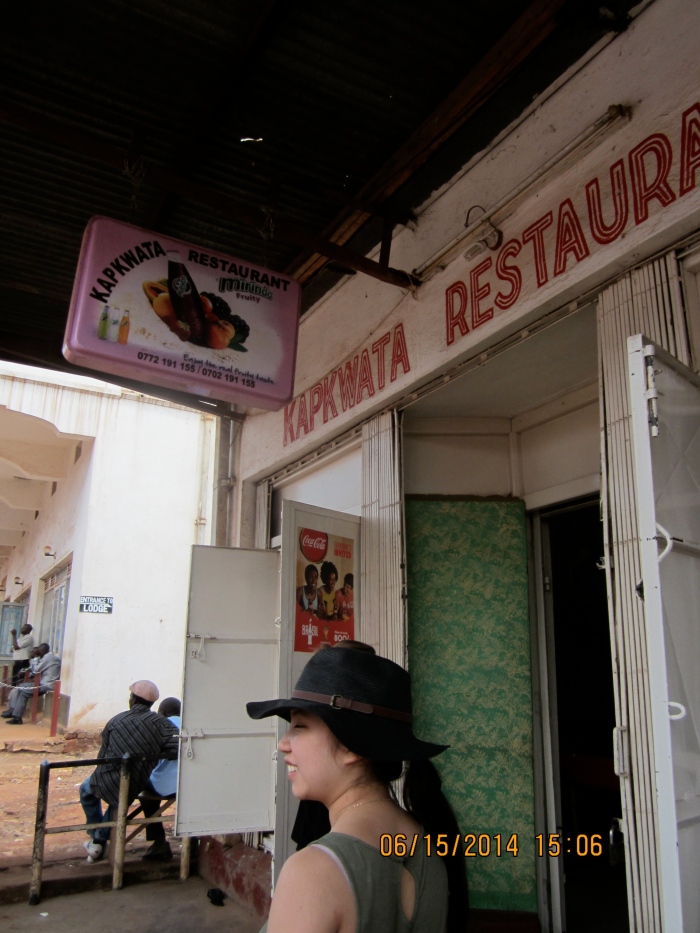Now that I’m ending my fifth week in Uganda, I’ve settled into a relatively consistent daily schedule.
My mornings start early. The roosters don’t wake me up anymore, but because my room is right next to the kitchen, club music often starts playing before 8 a.m. and there’s a lot of chattering as the cooks prepare our breakfast. I often get up before breakfast at 9 a.m. and either begin my work for the day, write blog posts, or just take advantage of the decent internet connection.
At nine, all the fellows have breakfast, which usually consists of two pots of tea, two pots of hot milk, a pot of coffee and some type of dough-y item. We’ve had pancakes, french toast, nutella crepes, donuts, fritter-like items, and a potato egg scramble. I also have my first banana of the day. I’ll be excited to return to my usual yogurt with honey in the U.S. – yogurt here comes in bags and you drink it with a straw.
Breakfast initiates the slow and steady start to the morning. I begin writing and editing my articles and transcribing interviews until around noon, when I get ready to walk to Namatala to work with the women.

Kapkwata Restaurant.
Sometimes I go out for lunch, but between the heavy breakfasts and dinners, stopping for fruit and chapati is often enough. Our regular restaurant is Kapkwata, a traditional African restaurant that’s a little shocking by any American standards but provides good, cheap meals. I avoid the meat and fish and get either beans or cowpeas (basically peas and carrots in a sauce) with rice or chapati. A full meal costs around 3,500 shillings, or $1.40.

On our walk.

Further along the walk.

Entering Namatala.
Brittany, Maryann and I walk through the heart of Mbale to Namatala everyday. I’ve become accustomed to the walk, the varying levels in the sidewalk and the transition from concrete to dirt. Before we leave the main downtown area, we stop and buy bananas from the women sprawled out on the sidewalk for 200 shillings each (less than 10 cents each).
In Namatala, we pass through a second downtown-like area, this time less formal and more run down, less crowded and anonymous and more familiar/personal. I often stop for an avocado and chapati in the market here if I didn’t get lunch, both for 500 shillings each (20 cents).

One of the many cows.

Kenneth, our chapati maker!
At Child of Hope school, our partner organization, we work with the women in a tiny school room with benches made for skinny four year old limbs. Although we’re supposed to start at 1 p.m. each day and go until 4 p.m., due to “Africa time” the women arrive anywhere from 15 minutes to an hour and a half late, so we often finish later as well.
We have three orders of business: product making, business class, and story interviews. I am assigned to one woman from each year to work with on product making and three women from each year to profile and write about, so each day I juggle monitoring my products while also snagging the translator to interview women with me.
After class, one of the photography fellows and I sometimes meet with a woman at her home or business.
On the way home, I run errands like pulling money from the bank, buying airtime, or stopping at a shop for snacks or souvenirs. Back at the Casa, I collapse on one of the couches, check my phone on the first wifi connection in hours and hope that by some stroke of fate, the internet, electricity, and water pressure are all at sufficient levels for the evening.
All of the 1000 Shillings fellows are required to be inside the Casa after sunset, so from 7 p.m. onward we’re all here, showering off the days grime, socializing with other visitors, or ordering snacks. One of my favorite things to do is order a pot of African tea and attempt to get some reading in. Dinner is hopefully at seven, and consists of rice, potatoes, and usually a beef stir fry type dish. If they serve bananas, my banana tally goes up to four for the day.
After dinner Maryann, Brittany and I retreat to what we call “The Cave” (our room) and work on our respective assignments until we go to sleep.

Child of Hope students.
The days feel long but simultaneously have gone by incredibly fast. I have a lot of work to finish before I reach the end, although that doesn’t change how quickly it will come. Walking away from Child of Hope next Friday will be so surreal.










